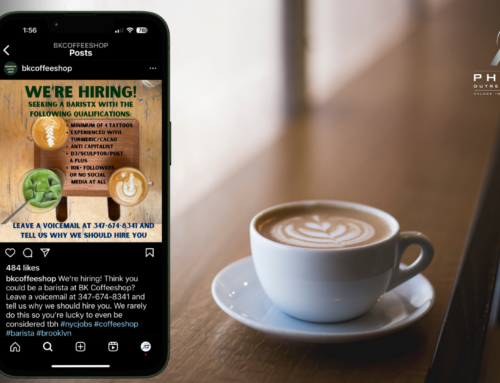Workforce development boasts a remarkable hidden strength that truly distinguishes itself: the power of advocacy. What is advocacy? It’s essentially the buzz people create about you when you’re not in the room. The ability to build strong advocacy within your communities and industries is not just a skill; it’s a catalyst for empowering residents and fostering meaningful change.
Let’s explore why advocacy is a game-changer for workforce development organizations and how it hinges on the pillars of trust, accuracy, and accountability.
The Power of Advocacy in Workforce Development
Advocacy, within the realm of workforce development, transcends conventional boundaries, emerging as a formidable force that propels positive transformation. When communities unite in support of workforce development initiatives, a cascade of benefits unfolds, granting residents access to a spectrum of resources, opportunities, and a well-defined pathway toward a brighter future. This advocacy creates value by fostering connections among individuals who might not otherwise meet, building communities, amplifying networks, and facilitating cross-industry collaboration. This interconnectedness enhances the potential for positive change, transforming passion into action and contributing to the overall value of workforce development.
In this intricate dance of empowerment, advocacy assumes the role of a vital bridge, seamlessly connecting the aspirations of individuals with the wealth of resources diligently provided by dedicated workforce organizations. It operates as a conduit, ensuring that the collective dreams and ambitions of the community find resonance with the strategic initiatives and programs put forth by those committed to fostering growth and development.
Picture advocacy as the guiding force that not only amplifies individual voices but harmonizes them into a collective chorus of progress. As communities rally behind workforce development, the resonance of this support reverberates through every opportunity, turning aspirations into achievable milestones and dreams into tangible realities.
The true power of advocacy lies in its ability to not only create awareness but to mobilize action. It transforms passive support into active engagement, sparking a chain reaction of collaboration and empowerment. This interconnected web of advocacy becomes the lifeblood of workforce development, breathing vitality into employer-led initiatives that, in turn, empower individuals to take charge of their professional journey.
In essence, advocacy in workforce development is the catalyst that fuels a dynamic synergy between community aspirations and the tangible resources made available through dedicated organizations. It serves as the driving force behind positive transformation, cultivating a community where individuals don’t just receive opportunities but actively contribute to the shared progress of the workforce and, consequently, the broader community.
Building Advocacy: Trust, Accuracy, and Accountability
At the core of effective advocacy lies trust. Communities trust organizations that demonstrate a genuine commitment to their well-being. This trust is cultivated through accurate information and accountability. Workforce organizations must be reliable sources of data and guidance, ensuring that the information provided is not only accurate but also aligned with the community’s needs.
Accuracy is paramount, especially when it comes to labor market information. Understanding the dynamics of the local job market is crucial for tailoring workforce development initiatives to meet the community’s actual needs. This involves delving into the intricacies of employment trends, skills demand, and emerging industries. By providing accurate and up-to-date labor market information, workforce organizations become invaluable partners in shaping the community’s economic landscape.
Enhancing Relationships through Expertise
In the pursuit of building advocacy, workforce organizations embark on a transformative journey by strategically positioning their Board leadership and Board of Directors as industry experts in the field of workforce development. This deliberate move goes beyond a mere acknowledgment of industry intricacies; it becomes a cornerstone for fostering meaningful relationships and amplifying the organization’s impact within the community.
- Establishing Credibility: By showcasing the expertise of Board leadership and Directors, workforce organizations establish credibility within the intricate landscape of workforce development. This credibility becomes a bedrock upon which partnerships are built and advocacy gains a solid foundation. Community stakeholders are more likely to rally behind an organization that not only understands the nuances of workforce dynamics but is also led by individuals recognized as authoritative figures in the field.
- Providing Strategic Guidance: Expertise extends beyond mere knowledge—it involves the strategic application of that knowledge. Workforce organizations, with seasoned leaders at the helm, are better equipped to provide not just information but strategic guidance. This includes a deep understanding of labor market information, allowing the organization to not only interpret data but also contextualize it within the broader economic landscape. Armed with this expertise, the Board can offer invaluable insights into the trends shaping the local job market, empowering community partners to make well-informed decisions that align with the evolving needs of the workforce.
- Enhancing Decision-Making: In the intricate dance of workforce development, decisions carry significant weight. Board leadership and Directors, positioned as industry experts, become trusted advisors in the decision-making process. Their insights go beyond the surface, delving into the complexities of workforce trends, emerging industries, and skills demands. This depth of understanding becomes a guiding light for organizations and community partners alike, ensuring that decisions are not only informed but strategically aligned with the overarching goals of workforce development.
- Strengthening Community Relationships: A workforce organization’s relationship with its community partners is a delicate ecosystem. By positioning Board leadership and Directors as industry experts, the organization not only builds trust but fosters a collaborative atmosphere. The community sees these leaders not just as representatives but as allies in the shared mission of advancing the workforce. This strengthened bond becomes the catalyst for enhanced advocacy, as the community recognizes and champions the organization’s commitment to expertise and excellence in workforce development.
Why Understanding Labor Market Information Matters
In workforce development, understanding labor market information emerges as the guiding compass, steering organizations toward strategic decisions that resonate with the unique needs and challenges of their community. This profound understanding of data is not merely a statistical exercise; it is the key to unlocking a myriad of opportunities and shaping a future where both individuals and the entire community thrive.
- Decoding Community Dynamics: Labor market information serves as a powerful lens through which workforce organizations can decode the dynamic landscape of their community. It goes beyond mere numbers, providing a comprehensive view of employment trends, skill demands, and industry shifts. This holistic understanding allows organizations to grasp the pulse of the community, discerning the nuanced factors that influence workforce dynamics.
- Tailoring Programs and Training: Armed with a nuanced understanding of labor market information, workforce organizations gain the ability to tailor their programs and training initiatives with precision. This strategic alignment ensures that the services offered directly address the demands of the local job market. Whether it’s identifying emerging industries, predicting skills in high demand, or adapting to technological shifts, organizations can proactively respond to the evolving needs of both job seekers and employers.
- Empowering Individuals: The significance of understanding labor market information extends to the heart of workforce development—empowering individuals. By aligning programs with the demands of the job market, organizations provide individuals with not just training but relevant and applicable skills. This empowerment transcends traditional employment; it fosters a sense of adaptability and resilience in individuals, preparing them for a dynamic professional journey in an ever-evolving workforce landscape.
- Contributing to Economic Vitality: The strategic alignment facilitated by a deep understanding of labor market information isn’t confined to individual empowerment; it ripples through the entire community. By tailoring programs to meet the needs of the local job market, workforce organizations contribute to the overall economic vitality. This symbiotic relationship between workforce development and economic growth becomes a driving force for community prosperity, creating a positive cycle of opportunity and advancement.
In essence, understanding labor market information is not a passive endeavor but an active and strategic pursuit. It is the cornerstone of informed decision-making, enabling workforce organizations to navigate the complexities of the workforce landscape with precision. As organizations delve into the intricacies of labor market data, they don’t just decipher numbers—they unlock the potential for individual empowerment, community prosperity, and a future where the workforce thrives in sync with the pulse of its dynamic surroundings.
Advocacy is the secret superpower that propels workforce development initiatives to new heights. By fostering trust, accuracy, and accountability, organizations can build strong relationships within their communities. Being a beacon of expertise in workforce development, including a deep understanding of labor market information, not only enhances advocacy but also ensures that initiatives are precisely tailored to empower residents on their journey to a thriving future.
As we champion advocacy, we unlock the true potential of workforce development, one story at a time.






